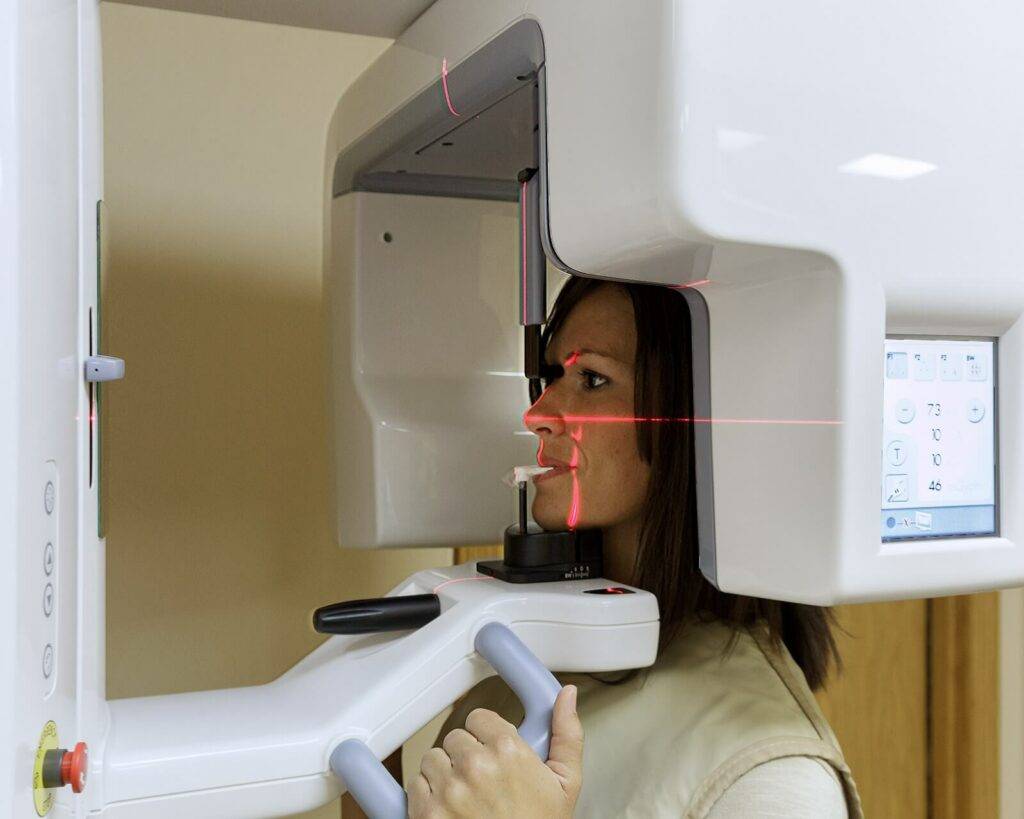Cone Beam Computed Tomography (CBCT) has emerged as a game-changer in modern orthodontics, significantly enhancing the accuracy of diagnostics and the precision of treatment planning.
Unlike traditional 2D imaging methods, CBCT provides detailed 3D images of the patient’s dental structures, soft tissues, nerve pathways, and bone. This comprehensive view enables orthodontists to diagnose complex cases with greater accuracy and develop more effective, personalized treatment plans.
One of the primary advantages of CBCT in orthodontics is its ability to deliver highly detailed images that capture the full anatomy of the craniofacial region.
This allows orthodontists to assess the exact position of teeth, roots, and jaws, identify potential issues that may not be visible on standard X-rays, and evaluate the relationship between different anatomical structures.
As a result, CBCT facilitates a deeper understanding of the patient’s unique dental and skeletal characteristics, leading to more accurate diagnoses.
The precision offered by CBCT technology is particularly valuable in treatment planning. Orthodontists can use CBCT scans to simulate various treatment scenarios, predict tooth movement, and anticipate challenges that may arise during treatment.
This predictive capability allows for the customization of treatment plans tailored to the patient’s specific needs, enhancing the effectiveness of orthodontic interventions.
For instance, in cases of impacted teeth, CBCT can accurately locate the tooth’s position and orientation, enabling more precise surgical planning and reducing the risk of complications.
CBCT also plays a crucial role in identifying and managing complex cases. For patients with craniofacial abnormalities, temporomandibular joint (TMJ) disorders, or other intricate dental conditions, CBCT provides the detailed visualization necessary for thorough evaluation and treatment.
The ability to view the anatomy in 3D helps orthodontists to make informed decisions and implement strategies that address the complexities of each case, improving the overall outcomes for the patient.
Another significant benefit of CBCT in modern orthodontics is its contribution to patient communication and education. The 3D images produced by CBCT are more intuitive and easier for patients to understand than traditional 2D X-rays.
This helps orthodontists explain the diagnosis, treatment options, and expected outcomes more effectively, leading to better patient engagement and compliance with the treatment plan.
In addition to improving diagnostics and treatment planning, CBCT also enhances the safety and efficiency of orthodontic procedures. By providing a clear, detailed view of the patient’s anatomy, CBCT minimizes the risk of complications during surgical interventions and allows for more accurate placement of orthodontic appliances.
This level of precision reduces the need for adjustments and follow-up procedures, making the treatment process more efficient and comfortable for the patient.
Despite its many advantages, the use of CBCT in orthodontics is not without considerations. The higher radiation dose compared to standard X-rays and the cost of the technology are factors that need to be weighed.
However, the benefits of CBCT, particularly in complex cases, often outweigh these concerns, making it an invaluable tool in modern orthodontic practice.
In conclusion, CBCT has revolutionized the field of orthodontics by providing enhanced diagnostic capabilities and facilitating more precise and personalized treatment planning.
Its ability to offer detailed 3D images of dental and skeletal structures allows for better assessment, planning, and management of orthodontic cases, leading to improved patient outcomes. As CBCT technology continues to evolve, it will undoubtedly play an even more integral role in the advancement of orthodontic care.


